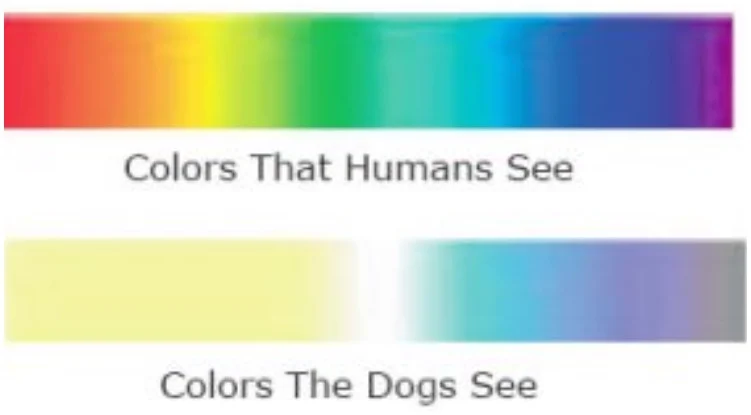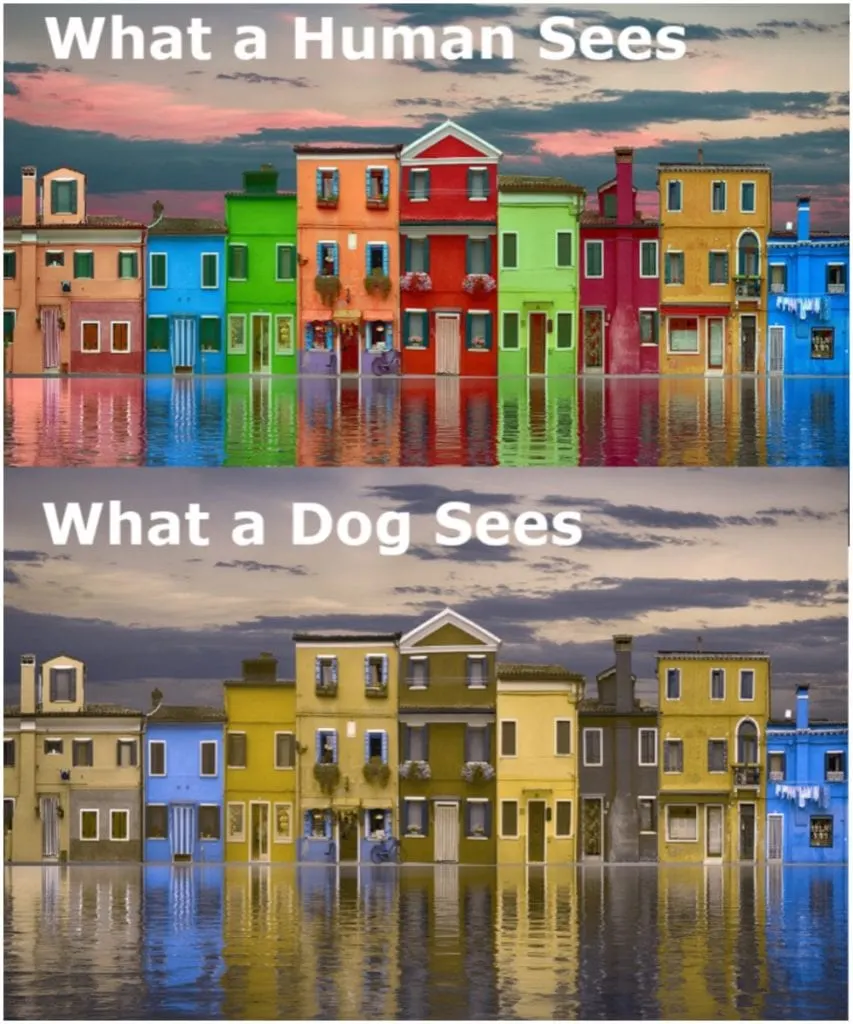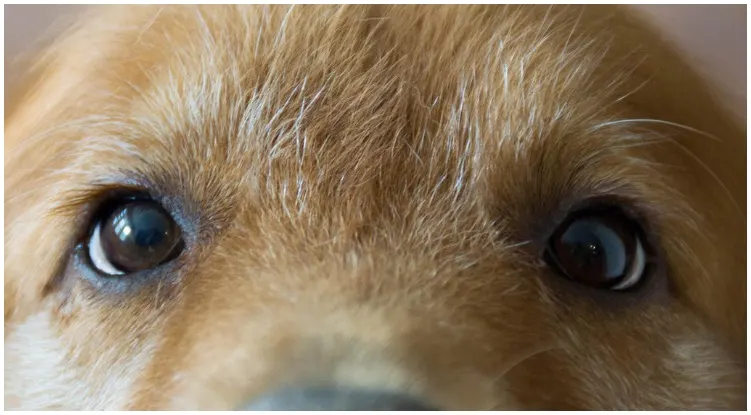If you’ve been a dog owner for some time now, you must be curious about the way your dog sees the world. One thing that we often hear about dog vision is that they can’t see colors. But is that true? If you’ve ever wondered “Are dogs color blind?” know that you’re not the only one. You just can’t help but wonder how the green grass or other parts of the external world look like through the lens of a dog.
They have been countless of researches about the color spectrum that dogs can see. And while we still don’t know everything about dog vision, we are still able to paint a pretty good picture about the way that our dogs see the world. Here are the facts and myths about dog color vision.
How do the eyes of your dog work?
Many of the same components exist in your dog’s eyes as they do in yours. When all is said and done, your dog’s eyes work in the same way as the human eye does. Let’s go over the eye canine anatomy.
The optic nerve
The optic nerve is the foundation of your dog’s vision. It connects the eyeball and the brain, carrying electrical impulses from the eye to the brain, where they are processed into images.
The retina
Your dog’s eyes, like yours, have a retina. This is the eyeball’s interior lining, which receives light and transmits signals to the brain via the optic nerve, where the information is processed to generate vision.
Rods
Millions of light-sensing cells (called photoreceptor cells) assist analyze light entering the eye and convert it into an image inside the retina. Rod photoreceptor cells are one type of photoreceptor cell. They’re sensitive cells that primarily detect movement and aid your dog’s vision in low-light circumstances.
Cones
Cones are a different form of light-sensing cell in your dog’s retina that are mostly responsible for color vision. Cones work in bright light, whereas rods work in low light. They’re also useful for spotting small details.
Are dogs color blind?
Let’s have a quick anatomy lesson here. The first thing you need to know in order to understand this article is how the eye actually works. Eyes contain specialized cells and receptors that we call rods and cones. Cones are the ones that help us see colors, while rods are responsible for detecting motion and aiding vision in varying shades of light.
Humans have three different types of cones, while dogs only have too.
What does that mean? Well basically, thanks to the three cones humans are able to identify three color combinations (red, blue and green). Dogs are limited to only two (yellow and blue). Therefore, we describe their vision as two-colored or dichromatic.

What do we consider being color blind?
There are two different types of color blindness: The inability to differentiate between different colors, or the inability to see certain colors at all. Color blindness is caused by an abnormality in the cones – the eye’s color-sensing receptors.
There are two different types of color blindness in humans. Depending on the affected cones there are:
- Red-Green color blindness
- Blue-Yellow color blindness
For example, people with blue-yellow color blindness cannot differentiate between these two colors. While people with the red-green type can’t differentiate between red and green.
What’s true for dogs?
Dogs have a yellow-blue dichromatic vision. That means that dogs and people with red-green color blindness see the world in a similar way. Dogs see shades of blue-violet and yellow, but cat see red, orange and green. Instead these colors, they see different shades of gray.

What colors do dogs see?
Dogs and humans see the world completely differently. When your throwing a red ball on your green lawn, your dog sees a gray ball falling onto a differently gray colored field of grass.
Dogs vividly see shades of blue, violet and yellow. But instead of red, orange and green, they see different shades of gray.
Research also believes that besides gray, dogs see red and green in shades of brown too.
Even though your dog’s world isn’t as colorful as your own, you don’t need to feel bad for them. The lack of colors is made up in the richness of smells that dogs can experience. Their sense of smell is truly remarkable, and even though their vision might be poor, they will still be able to smell you from a large distance.
If you want to know how different animals see the world, watch this video:
How do dogs and humans see things differently?
So, if all of these components of your dog’s eyes work in the same manner as the human eye does, why do dogs always have some degree of color blindness while people do not? Cones hold the key to the solution.
Trichromatic refers to the appearance of human eyes. Humans (and a few other primates) have three different types of cones in their eyes. Each of these three cone kinds allows us to see various hues on the spectrum: blue, red, and green.
Dogs have only two types of cones in their eyes because they are dichromatic. One sees blues, while the other perceives hues of red and green that are similar to a human’s vision of red and green. In essence, dogs’ eyes lack red-green cones, resulting in a sort of red-green color blindness. The same reason color-blind people can’t see specific hues is that their red-green cones are absent.
Do dogs see in the dark?
Even while dogs cannot see color as well as humans, they can see in the dark much better than humans. While dogs’ night vision isn’t flawless, seeing effectively in the dark is one area where your dog’s vision outperforms yours.
Because it’s in their evolutionary makeup, dogs have excellent night vision. Our modern-day dogs originated from prehistoric wild canines that hunted primarily at dark and dawn. In order to track their prey, they required to be able to see well in low light. This feature has been passed down through the generations, and it still has an impact on dog vision today.
The canine eye has special anatomical traits that allow it to see well in the dark. For starters, their pupils are larger, allowing more light to enter the eye, even when light is scarce. In addition, dog eyes have much more rods than human eyes – recall, rod cells help you see in low light, while cone cells let you see in bright light. The canine eye is also superior than a human’s when it comes to watching things move, especially at a distance, because rods aid to detect movement.
The tapetum lucidum, more than any other trait, is what gives dogs their remarkable ability to see well in the dark. It works as a reflector behind the retina, reflecting light that has already entered the eye back to the retina, giving information another chance to process it. Basically, this region of the eyeball gives your dog’s eyes a boost at night. It’s because of this double reflection that your pet’s eyes appear to shine at night.
The Black and White Vision Theory
If dogs are capable of seeing many colors, where did the assumption that they only see in black and white arise? According to the American Kennel Club, this misconception can be traced back to Will Judy, the founder of National Dog Week, who wrote in a 1937 training booklet that dogs could only see in shades of black and gray. In the 1960s, researchers reinforced the misconception by wrongly assuming that primates were the only species capable of sensing color. This misconception concerning dogs lingered until 2013, when Russian researchers posed the question, “Are dogs color blind?” According to the Smithsonian, they established that dogs can sight and distinguish between yellow and blue.
The researchers tested whether dogs could tell the difference between the two colors or between several degrees of brightness. They did so by placing four pieces of paper on feed boxes — one bright yellow, one dark yellow, one light blue, and one dark blue — with only the dark yellow paper box containing meat. The scientists put only dark blue and light yellow sheets on the box after the dogs learned to identify the dark yellow paper with their treat, assuming that if the dogs sought to open the box with the blue paper, it was because they associated the dark shade with food rather than the color. The majority of dogs, on the other hand, went straight for the yellow paper, suggesting that it was the hue, not the brightness, that they had learned to link with the food.
Other misconceptions
Color receptors aren’t the only feature that distinguishes dog vision from human vision. According to Business Insider, dogs are relatively nearsighted, with a vision of roughly 20/75. This means that something 20 feet distant will appear to be 75 feet away when viewed by a dog.
While this may make it appear as if your poor dog has poor vision, the AKC points out that dogs not only have a broader range of vision than humans, but they are also better at seeing fast movement, making them good at spotting fast-moving prey.

